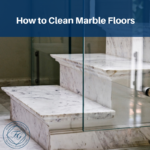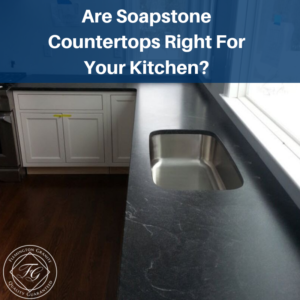
We’ve pointed out a few times recently how valuable an extended knowledge can be, when you’re interested in granite countertops. Understanding how the stone is quarried, how it’s measured and cut, and how it’s detailed can help you appreciate better the validity of quotes contractors give you, among other things.
Whether you’re interested in having this beautiful material installed in your home, or you’re interested in the industry professionally, it’s high time we took a look at the tools involved in granite edge profile fabrication. That’s a mouthful, isn’t it? You’ll be surprised just how interesting this actually is, and how much of a blend of art and science it truly takes to make this beautiful, lustrous material take the form that graces such elegant and homey kitchens and bathrooms.
Machine or Hand?
A question a lot of people ask is, are these edge profiles done with machines (such as a stone router), or by hand? The truth is, it’s been done both ways, and it really depends on a few factors, which is more ideal. Doing it by hand can be easier for the trained professional. It takes a trained hand, a good eye, and a lot of patience, but this eliminates some setup and some lifting and positioning challenges that come from using a router.
However, for large volumes, using more precise, assistive measures such as routers and other machinery, is probably wise. Facilities that do a lot of jobs at once, or a large volume per unit of time almost all use routers, and even some CNC machinery to get the job done.
Regardless, though, of whether these machines are present in the fabrication, the tools applied through hands or machines are pretty universal. These, and the steps involved, are what we’re really interested in.
Preparation
Obviously, preparing the stone for the edge profile would be the first step. This involves a lot of grinding and shaping, which, if done by hand, involves a fair bit of patience and a gentle approach. The tool of choice for this is the cup wheel, a vaguely suction cup-shaped metal tool with angled, beveled teeth. These high-speed, rotating tools will grind away imperfections, and shape the stone appropriately. There are a number of these with different grits (just as with sand paper or grinding wheels), the finer grit used for softer removal steps.
Edge Profile Fabrication
There are a number of different edge styles out there, which run the entire gamut in complexity and difficulty. Among them are Straight, Round, Bullnose, Orgee, Cove, Waterfall, Bevel and Triple
Pencil.
A skilled artisan can create any of these by hand, but better precision and consistency can be done with a stone router. Router bits tend to have different grit levels themselves, and an inverse shape to the one intended to be implemented.
Smoothing
Once the router (or, a hand stone cutting tool) has been used, it has to be smoothed, because of microchipping and sharpness of cut edges. This is done with polishing material. These have grit values of 46, 60, or 120 usually, and are usually grinder wheel in form factor.
Sand paper products of similar grit can also be used, though this is less efficient.
At this stage, it will be handed over to another group of workers for polishing, which has its own set of tools and materials.
To learn more about the tools of this trade, and about granite as a whole, fill out our contact form today!






